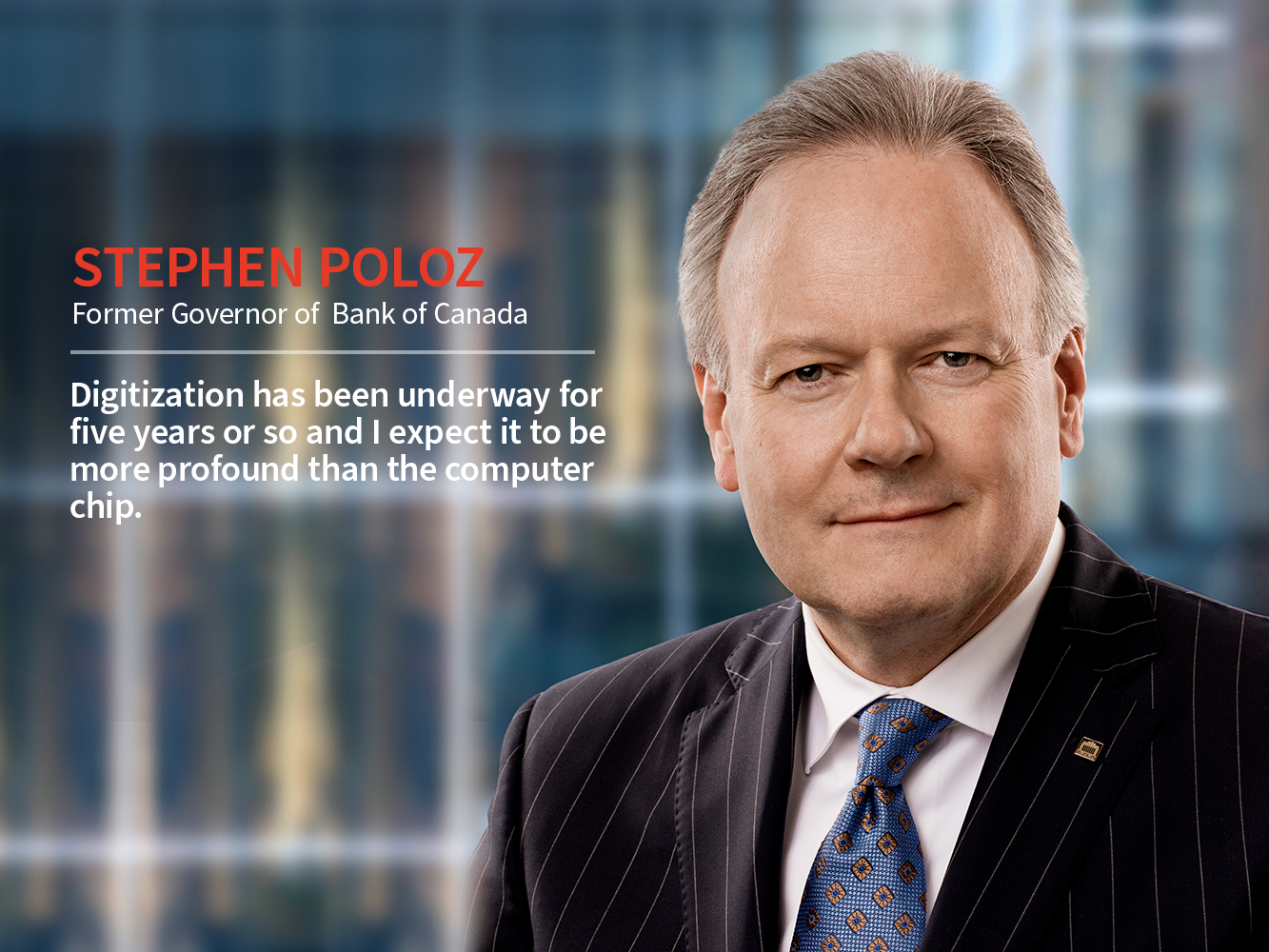Interview
Stephen Poloz talks to Pender about his new book, The Next Age of Uncertainty – Part 1

In part one of two, Stephen Poloz, Special Advisor to Osler and former Governor of the Bank of Canada, talks about future economic volatility and the five tectonic forces driving it.
Why title your book The Next Age of Uncertainty?
Back in the ‘70s, economics as a profession seemed to fall apart because economists couldn’t explain what was happening. That was basically the thrust of Galbraith’s book, The Age of Uncertainty. In the late ‘70s and early ’80s, exactly when I was in grad school, economics and macroeconomics were being revised with different ways of modeling inflation expectations. I maintain that one of the reasons why the ‘70s were so awkward and difficult was because of important forces acting beneath the surface. It’s not just because there was OPEC and oil prices went up. There were deeper reasons. The important one was demographics which were exploding from the baby boom of the ‘60s which was my generation. So that great plateau in labour force growth, the 50-year thing, was an important disruptive force. That was one of the reasons why Galbraith wrote The Age of Uncertainty.
In my book, I argue that some of those same demographic forces are acting in big ways again. So that’s why I called it The Next Age of Uncertainty, plus I didn’t want to say The New Age of Uncertainty. That would kind of sound like the last one. So, I think The Next Age of Uncertainty conveys that it might not be the last one. We have at least 30 years of uncertainty ahead of us. And they will be awkward.
In the book, you discuss five tectonic forces that you believe will drive future economic volatility–population aging, technological innovation, increasing economic inequality, rising debt, and climate change. Is there a tipping point in some of these forces that might create a substantially different future than we currently expect?
Some of the forces, such as rising debt, have been here for some time. The transition to Net Zero, that’s a new one. We don’t know how between now and 2050 we’re going to get there. So, there’s an awful lot of uncertainty coming from that. I’ve mentioned demographics; that’s also another important factor. And the other one is technological change, which we think of as happening every day. But general-purpose technologies don’t happen every day. They happen once in a long while, and there have only been three industrial revolutions in history: the steam engine, electrification, and then the computer chip. These are technologies that go everywhere. They’re not just a single new thing. This is the fourth industrial revolution.
That’s really making a difference, the digitization of everything and what that means for robotics, artificial intelligence, and biotech. We saw that during the pandemic computers worked for three months nonstop to figure out the genetic code of the virus, and then they can make the vaccine in about 48 hours. It’s computers and AI that are doing the hard work. Those advances are going to be maybe even bigger than the computer chip, but the computer chip took nearly 20 years to get fully deployed. It was the second decade where we got all the productivity benefits.
“Digitization has been underway for five years or so and I expect it to be more profound than the computer chip.”
Digitization has been underway for five years or so and I expect it to be more profound than the computer chip. We know from engineering, biological and economic models, that when you have relationships between things that are moving, if the movements are non-linear, they interact in very surprising ways.
The mathematics behind this idea is called the “mathematics of chaos”. It’s called chaos because the outcomes are completely inexplicable. The same way we can’t explain why when the air is perfectly clear and you’re in a plane midway across the Atlantic, suddenly you get 15 minutes of hard turbulence, and it is clear air turbulence. The explanation is that the nonlinearities are interacting in completely unpredictable ways.
Or a person who is perfectly fit, like a marathon runner, dies suddenly, and when they check him, there’s no physiological reason. But then they think, “Hang on, that person was diagnosed with PTSD four years ago,” and they begin to suspect that there’s a deeper interaction. His death would be considered a “black swan,” an inexplicable event as the underlying causality is not understood. That’s what I’m trying to get at here: when things move all at once, there’s unmeasurable volatility.
Why is it important to shift our mindsets around increasing volatility in the future?
In the book The Black Swan, Nassim Taleb argued that when something happens that you consider to be a black swan, it changes your thinking forever. From now on, that event is possible, and it becomes part of your assessment of risk.
Case in point: the global financial crisis. “We’ve got the safest banking system in the world…blah, blah, blah” and then the crisis happened so we had to change the whole system to prevent future ones. Today, people ask, “Will, there be a recession next year?” Nobody knows the answer to that question because there are so many things you don’t know. The actual question to ask is, “Should I be prepared for a recession in the next year or two?” The answer to that is “yes”. It’s like knowing there’s a 40% chance of rain. You take your umbrella. You don’t cancel your tee time. Whether you’re an investment manager or a firm, you prepare yourself for a wider range of possibilities because of the higher probability of future volatility. You must actively manage risks when they arise to convert those risks to value. It gives you a competitive edge to manage risks better than someone else.

The Pender Hot List: Summer Reading & Listening 2022
Pender’s ever-popular summer hot list is back! It’s packed with big ideas to challenge and inspire you on a range of topics

Invest like an Olympian: Part I
The Tokyo Olympic Games are in full swing, and all eyes are on the athletes competing at the very top of their game. At Pender, we have been looking at the techniques, lessons, and […]



